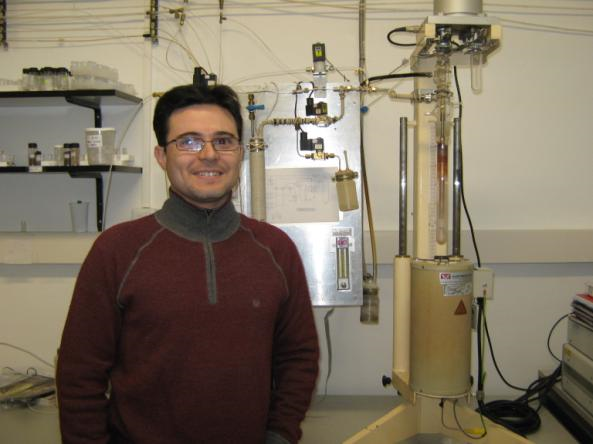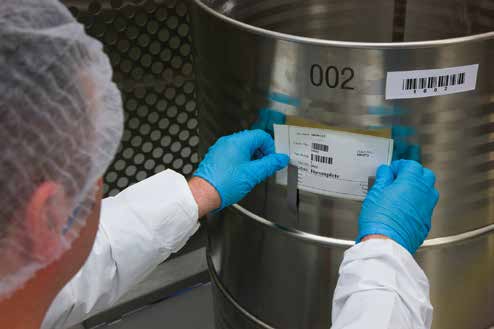 Back to news
Back to news
Instituto de Carboquímica Employs TGA to Research Climate Change and Pioneer Environmentally Friendly Fuels
The Instituto de Carboquímica (ICB) in Zaragoza, a public research Centre belonging to the Spanish National Research Council (CSIC), currently operates TGA apparatus incorporating CI microbalances from CI Precision to analyse gas-solid reactions at high temperature (800-1000ºC). ICB is highly regarded for its scientific research in areas with high social impact such as climate change, air pollution, waste recovery and valorisation; strategic areas including hydrogen production, renewable fuels and advanced materials, as well as other fields of considerable social demand and research opportunities including nanoscience and nanotechnology and new molecular sensors. The research group known as “Combustion and Gasification” led by Dr. Juan Adánez Elorza, focuses on the development of environmentally friendly processes for power generation using different feedstock such as natural gas, coal and other solid fuels (biomass or wastes). This group has longstanding experience in research concerning combustion and gasification in bubbling and circulating fluidised beds, as well as in the hot gas-cleaning processes related with sulphur compounds (SO2, H2S, etc.). Dr Alberto Abad Secades, who is a tenured scientist at ICB, outlines the applications carried out at ICB. He explains that of the fourteen group members, everyone uses the TGA apparatus from CI Precision for the development of their investigations:“In recent years, the group’s research has focused on the reduction of greenhouse gas emissions into the atmosphere from power plants, looking particularly at the development of new combustion processes allowing a low-cost CO2 capture, and new technology for H2 generation without CO2 emissions, named Chemical-Looping Combustion (CLC) and Chemical-Looping Reforming (CLR). Also, our experience on sulphur removal is used nowadays to analyse the sulphur retention by calcium based sorbent applied to oxy-fired power plants.”The team purchased its first TGA equipment, consisting of the CI microbalance, DISBAL control unit, LabWeigh software and single zone furnace and furnace controller from CI Precision 8 years ago and more recently invested in two additional systems. Dr Abad explains the value of selecting the equipment from CI Precision:
“Our choice of TGA equipment is based on its easiness for assembly and operation. Also, the CI TGA apparatus has proved to be very versatile, as it offers a high number of operation possibilities: wide range of temperature and size of sample and gas mixture composition.”Dr Abad describes the range of experiments as follows:
- We have used them extensively to evaluate different properties of solid samples, for example, the reactivity of solids materials with different gases, and its reaction kinetics. In the more recent works we use CH4, H2 or CO as a reducing agent of a metal oxide. Also we used H2S or SO2 for sulphidation or sulphation of calcium based sorbents (limestonesor dolomites).
- The oxide compounds present in the solids can be deduced by Temperature Programmed Reduction (TPR). In this case, the evolution of the mass sample when a metal oxide is reduced by hydrogen by increasing the temperature is analysed. This is a qualitative and quantitative technique.
- The fraction of metal oxide present in a solid sample: by reduction of the metal oxide by hydrogen to the elemental metal, we can calculate the concentration of the metal oxide in the original sample.
“We have also connected the TGA system to an automatic control system, allowing us to conduct long term experiments without the supervision of a staff member. This option is very useful because of the nature of the CLC technology. CLC is a combustion technology in two steps with intrinsic CO2 capture. CLC is based on the transference of oxygen from air to fuel (e.g. natural gas, syngas, coal or biomass) by means of a metal oxide acting as an oxygen carrier material.» “In the first step, the fuel is oxidised to CO2 and H2O by high temperature reaction with the metal oxide, which is reduced. In the following step, the reduced compound is oxidised by air and a new reduction step can be accomplished. The result is that CO2 is obtained, separated from N2 in air.» “A key issue for the development of this technology is the oxygen carrier material, which should be highly reactive (among other physical and chemical properties) in consecutive reduction and oxidation cycles. We have developed oxygen carrier materials which have been evaluated for a high number of cycles in TGA experiments. In order to achieve this, consecutive reduction and oxidation cycles have been carried out during long time periods, in an automatic fashion. A high number of articles have been published by ICB which include experimental data obtained from using CI Precision’s TGA apparatus.”In conclusion, Dr Abad is complimentary about the CI microbalances he uses for his scientific research:
“CI Precision’s equipment is highly recommended because it is adaptable to a broad range of situations and operating conditions. In addition, this equipment is very reliable, so you can use the equipment for many years with good results.”With regard to the service he receives from CI Precision, he states,
“Finally, any problematic issue is solved in a friendly communication with the support centre.”For more information about TGA systems and microbalance equipment from CI Precision, please telephone +44 (0)1722 424100 or email: sales@ciprecision.com
descargar como pdf
Download PDF


